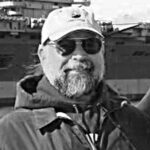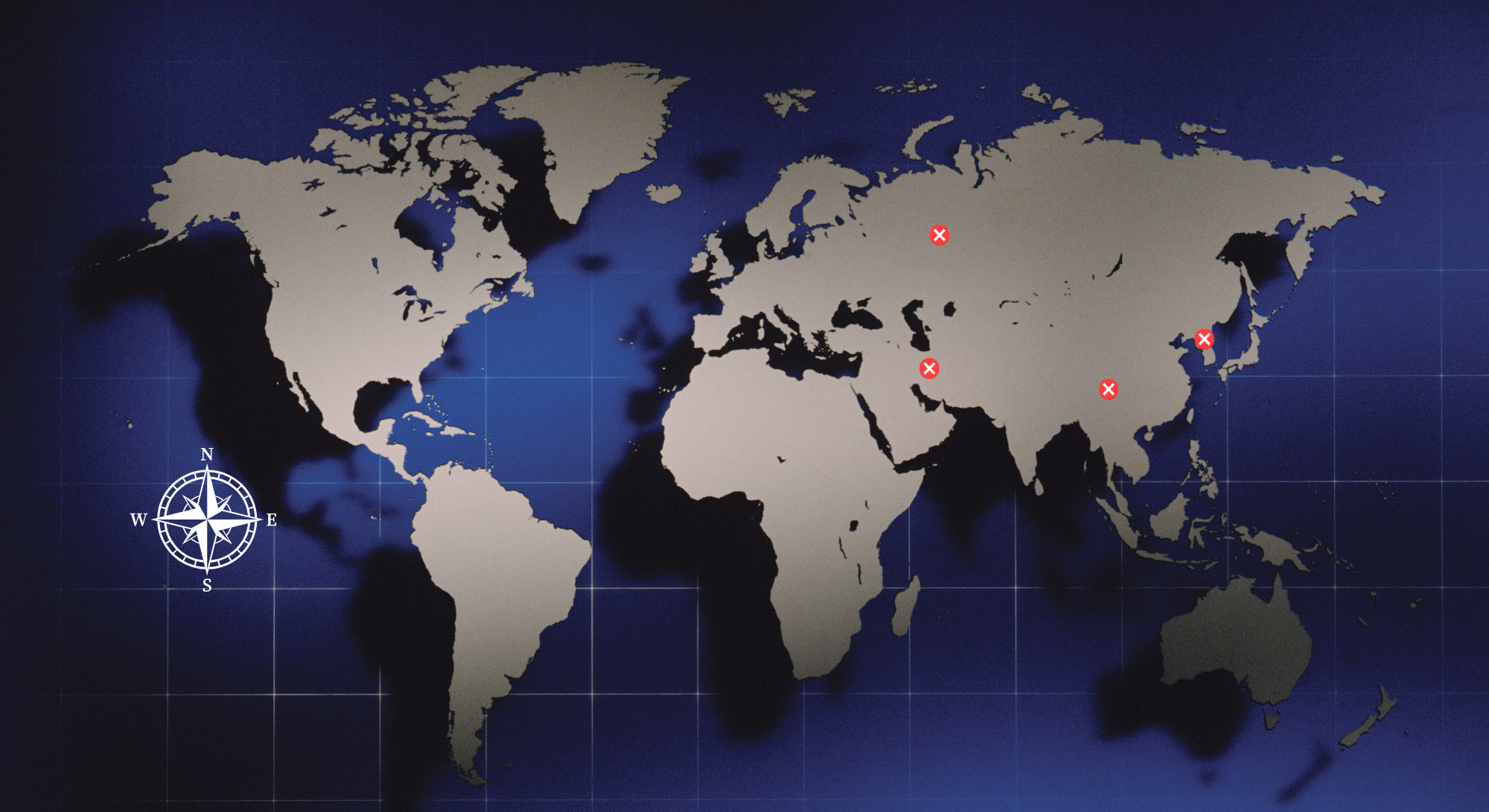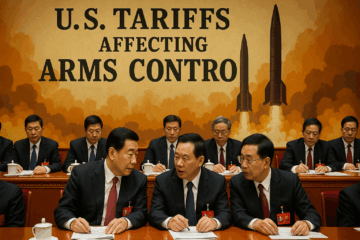Nuclear devices in space have the potential to prove indispensable tools, ideal for protecting the planet from asteroid impacts. They are, however, currently forbidden, unless the 1967 Outer Space Treaty is properly amended. This is because they are viewed as destructive weapons of war.
Recent scientific research at Sandia National Laboratories proves that carefully aimed nuclear detonations in space, early enough in an object’s approach to Earth, can deflect a threatening comet or asteroid by enough to put it on a safe trajectory. The idea is not to try to pulverize the object by a direct hit, which might still shower Earth with debris. Rather, by detonating the warhead at a modest distance from the object, the forceful ablation (evaporation) of one side of its surface, induced by the intense X-ray of a nuclear detonation, would cause the entire object to move away from the detonation.
This would be an example of what has been called a peaceful nuclear explosion (PNE). Back in the early Cold War, the US Atomic Energy Commission looked into potential applications of nuclear detonations for peaceful civil engineering purposes. These included digging canals, creating harbors, and moving mountains. And yes, fallout was expected, which is why these terrestrial applications were abandoned. An underground nuclear blast was also tested as a way to extract natural gas, by creating in some geologically promising area a subterranean cavity that could then be tapped. The test was not a success because the natural gas was radioactive.
Later, India’s first successful nuclear test (1974) was announced as a peaceful nuclear explosion, for oil extraction and mining purposes, not a weapon test. Then, in 1976, the U.S. and the USSR signed the Peaceful Nuclear Explosions Treaty, which permitted such blasts anywhere on Earth if the host country gave permission. Thus, there is some precedent for the use of nuclear devices for peaceful purposes.
Certainly, non-nuclear methods for diverting menacing space objects are possible. For instance, the National Aeronautics and Space Administration’s (NASA) test-demonstration DART high-velocity inert impactor mission was successful. But the object whose orbit was changed slightly was a very small moonlet of a slightly less-small asteroid. Other techniques being studied include attaching rocket motors to a threatening object or moving it aside via space tugs deploying giant nets. Such motors or tugs could be driven by chemical engines, or non-explosive nuclear propulsion, or solar power (either solar panels, or light sails).
These latter techniques are years or decades away from meaningful deployment. Due to their lower specific energy compared to a PNE, they would need for the inbound object to be detected very early and to be comparatively small.
For the largest potential Earth-bound objects, especially those coming from sunward, which can make them hard to detect very early, peaceful nuclear explosions might be an essential diversion method.
Obviously, such use of nuclear devices, well away from any people living on Earth or in space, would be for the benefit of mankind. However, nuclear devices can also be deadly weapons of war. They are indeed being looked at by America’s adversaries for purposes of space-based coercion and blackmail and even warfighting in space. Examples include Russia’s “Sputnuke” and China’s fractional orbital bombardment system. Effective strategic deterrence thus continues to require American preparedness and vigilance, throughout the cislunar and beyond the Moon.
However, nuclear explosives in space are truly a dual-use technology. There are already copious amounts of natural hard radiation throughout the solar system. An asteroid- or comet-moving PNE blast’s fallout would dissipate relatively harmlessly.
PNEs in space raise troubling but pressing questions about the need to rethink and update the Outer Space Treaty, since it prohibits placing any nuclear devices anywhere in space. On the one hand, all nuclear weapons based on-orbit should continue to be forbidden. But on the other hand, the same warheads used to defend Earth against space rocks simply must be allowed.
This might be achieved in one of two ways. One is to create a “Planetary Defense Guard” under the auspices of the UN, with the necessary nuclear devices put under UN Security Council control. However, the UN does not have a record of success regarding cooperative use of nuclear devices. A proposed plan in the early Cold War called for all nuclear arms to be pooled under central UN control. It went nowhere. The modern UN attempt at a treaty banning all nuclear devices everywhere (including PNEs) is also going nowhere, for the same reason. States owning nuclear warheads have no desire to give them up.
The other way to get the protection Earth requires is to recognize that planetary defense is a necessary and unavoidable aspect of the “Scramble for the Skies” now emerging. In this alternate scheme, rival powers compete using nuclear devices in a peaceful way for space-based civil engineering purposes. They vie to develop the best suite of proprietary systems, procedures, and technologies for deflecting Earth impactors via peaceful nuclear explosions. They could then also “race” to launch them whenever actually needed. Such healthy competition might significantly increase the odds of at least one contender making a successful diversion, while letting all contenders participate in this ultimate “space Olympic decathlon.”
Changing the OST out of sheer necessity, to allow PNEs for planetary defense, would have several very significant societal benefits. It would more rapidly and effectively advance humanity’s space defenses. It would urgently accelerate everything needed for the successful commercialization, industrialization, and colonization of space, which advocates say could take pressure off Earth’s endangered environment, too.
Allowing PNEs in space would also give spacefaring nuclear powers a way to stay within Cold War–style safety guardrails against nuclear crises and nuclear war. It would allow them to instead compete to show their culture’s and their government’s superiority through the peaceful, beneficial harnessing of both spaceflight and nuclear energy. Such a grand competitive program would help address three existential threats to the human race at once, three possible extermination events: a large asteroid strike, a climate catastrophe, and a nuclear holocaust.
Joe Buff is a Senior Fellow at the National Institute for Deterrence Studies.
About the Author

Joe Buff
Joe buff has long experience researching practical applications in math and actuarial science, management consulting, and national defense. His award-winning publications include six best-selling submarine technothrillers (the Captain Jeffrey Fuller series), and numerous articles and op-eds about undersea warfare, geostrategy, and nuclear deterrence in The Submarine Review, American Submariner, the U.S. Naval Institute Proceedings, The Day (New London) and on Military.com’s DefenseTech blog. Joe has presented to the Naval Submarine League, the U.S. Submarine Veterans, the U.S. Submarine Museum (Groton) and the New York State Military Museum (Albany). In early 2024 Joe was a guest on ANWA’s NucleCast, hosted by Dr. Adam Lowther, and he has begun authoring and coauthoring articles for the National Institute for Deterrence Studies' Global Security Review.





It’s notable the OST prohibition relates to the placement is very narrow and does implicated not the operation of nuclear devices in outer space. Thus, theoretically a nuclear weapons test in outer space would not be prohibited by the OST but might be implicated by the Nuclear Test Ban Treaty. FOBs, MOBs and ICBMs fall outside the OST as they are not placed in orbit as a deterrent.
Florent: Thanks much for your comment. Your paper is important and fascinating. And I agree with you completely: Effective asteroid & comet defense requires both nuclear propulsion for rapid-enough transit, and nuclear detonation for reliable-enough deflection. Even better would be basing such Space Rock Interceptors way out in space, scattered around the solar system, for more timely interception of threatening objects…. Which would all be total anathema to the blindly anti-nuclear “progressives” who keep denying basic realities of defense & deterrence.
The DART was already a nuclear tipped system, on the same foot as “conventional” weaponry is (non-implosion). It used a Water motor with an accelerator (from my article https://unisciencepub.com/wp-content/uploads/2022/03/A-Water-Motor-With-an-Accelerator-Water-With-High-Natural-Radioactivity-and-Fission.pdf ). There is no way one can be protected against space asteroids without nuclear fission, only people willing to conceal it to please the left-wing crowds.